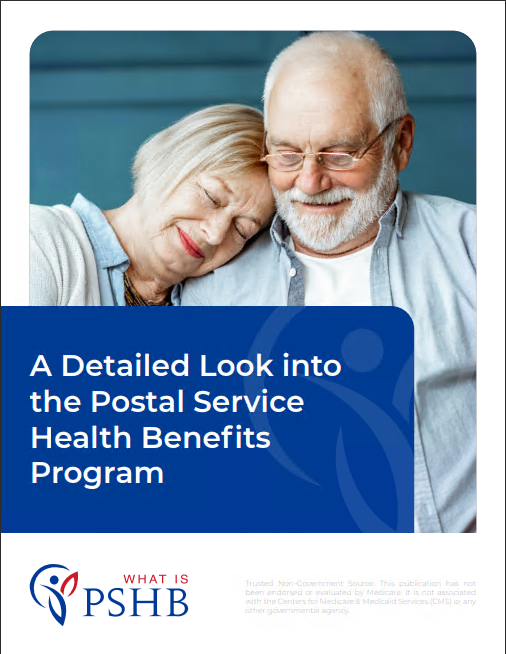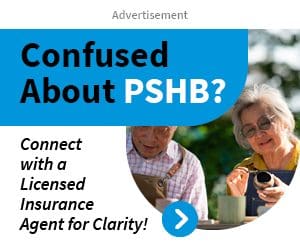Key Takeaways
-
Missing your Medicare enrollment deadline can result in costly penalties and gaps in your PSHB prescription drug coverage.
-
The PSHB program for 2025 requires careful coordination with Medicare, especially for retirees who are newly eligible or returning from a coverage gap.
Understanding Medicare Enrollment Windows
Medicare has strict enrollment windows, and the clock starts ticking as soon as you become eligible. Most Postal Service annuitants and eligible family members qualify for Medicare at age 65. If you don’t sign up for Medicare Part B when you’re first eligible, you could be left without sufficient medical coverage—even with PSHB.
Initial Enrollment Period (IEP)
Your Initial Enrollment Period is a 7-month window:
-
Begins 3 months before the month you turn 65
-
Includes your birthday month
-
Ends 3 months after your birthday month
If you miss this window, you may have to wait until the next General Enrollment Period (GEP), which runs from January 1 to March 31 each year. But that delay could leave you without proper PSHB coordination and result in permanent Medicare Part B late penalties.
Special Enrollment Periods (SEPs)
Some Postal retirees may qualify for a Special Enrollment Period if they had health coverage through employment and are now losing that coverage. However, PSHB coverage in 2025 requires careful scrutiny because not all SEPs guarantee seamless integration with Medicare.
How PSHB and Medicare Work Together
The 2025 PSHB program coordinates with Medicare, especially Parts A and B. If you’re Medicare-eligible and retired, you’re expected to enroll in Medicare Part B to keep full PSHB coverage. Skipping enrollment could mean higher out-of-pocket costs and even partial loss of benefits.
PSHB Requirement for Medicare Part B
For annuitants and family members who are Medicare-eligible, enrolling in Medicare Part B is now mandatory unless you meet certain exemptions:
-
Retired on or before January 1, 2025 and not enrolled in Part B
-
Age 64 or older as of January 1, 2025
-
Reside outside the U.S.
-
Covered through Veterans Affairs (VA) or Indian Health Services
If you don’t meet these exemptions, and you delay Part B enrollment, you may find yourself ineligible for full PSHB benefits when you need them most.
Prescription Drug Coverage
PSHB plans for Medicare-eligible enrollees include prescription drug coverage through a Medicare Part D Employer Group Waiver Plan (EGWP). This offers key benefits:
-
A $2,000 out-of-pocket cap for drug costs in 2025
-
Access to a national network of participating pharmacies
-
Waived deductibles in some plans if you’re enrolled in both PSHB and Medicare Part B
But here’s the catch: if you don’t enroll in Medicare Part B, your PSHB plan may not include the drug benefit at all. That gap could leave you paying the full retail cost of your prescriptions.
What Happens If You Miss Your Medicare Window
Failing to enroll in Medicare on time can lead to multiple complications.
1. Permanent Late Enrollment Penalties
If you miss the IEP and don’t qualify for an SEP, you’ll face a permanent monthly surcharge on your Medicare Part B premium—10% for every 12 months you were late.
2. Coverage Gaps Between Enrollment Periods
If you miss the IEP and don’t have an SEP, the earliest you can enroll is during the next General Enrollment Period. Your coverage wouldn’t begin until July 1, leaving you with a gap that PSHB might not fill.
3. Limited Drug Coverage Options
Missing your Medicare window means you may be locked out of PSHB’s Medicare Part D plan, which is automatically provided when you’re enrolled in Medicare. Without it, PSHB alone may not cover your medications, especially high-tier or specialty drugs.
How to Avoid the Medicare-PSHB Coverage Gap
The best way to ensure continuous and complete coverage under PSHB and Medicare is to prepare ahead of time. Here are steps to take:
Know Your Enrollment Dates
Mark your Initial Enrollment Period clearly and prepare at least 3 months in advance. Don’t wait until your birthday month. The earlier you enroll, the better your coverage alignment with PSHB.
Confirm Eligibility for Exemptions
Not everyone has to enroll in Medicare Part B to keep PSHB. Double-check if you meet exemption criteria. If you do, document everything to avoid future disputes about coverage eligibility.
Don’t Assume PSHB Alone Will Cover You
The PSHB system is designed to work with Medicare. It does not act as a standalone comprehensive plan once you’re Medicare-eligible. Benefits like reduced cost-sharing, waived deductibles, and drug caps depend on Medicare coordination.
Get Enrollment Help If You’re Unsure
Medicare rules can be complex, especially when combined with PSHB’s new requirements. If you’re unsure about your status or timeline, connect with a licensed agent listed on this website who understands how PSHB and Medicare interact.
What About Newly Eligible Family Members?
If your spouse or dependent becomes Medicare-eligible, their enrollment status affects your family’s PSHB benefits too. Each family member needs to be enrolled in Medicare Part B if they qualify and are covered under your PSHB plan. Otherwise, they could lose part of their benefits or face penalties.
In 2025, failure to coordinate Medicare enrollment with PSHB eligibility for dependents can lead to costly coverage interruptions.
Why PSHB Can’t Always Fill the Gap
The PSHB program for 2025 is robust, but it’s not a safety net for those who skip or delay Medicare. Here’s why:
-
Prescription Drug Plans Are Tied to Medicare: EGWP coverage only applies to those enrolled in Medicare Parts A and B. If you’re not enrolled, you’re not eligible.
-
Cost-Sharing Benefits Are Medicare-Dependent: Many PSHB plans offer lower copayments, waived deductibles, or out-of-pocket caps—but only if you’re enrolled in Medicare.
-
Medicare Part B Is Now a Core Requirement: Unless you’re exempt, skipping Part B means losing access to full PSHB benefits.
In short, PSHB doesn’t replace Medicare—it complements it. The two must be used together to avoid service disruptions or financial burdens.
Common Misunderstandings That Lead to Gaps
-
“I Thought PSHB Was Enough on Its Own”: It isn’t. PSHB assumes you’ll enroll in Medicare when eligible.
-
“I’ll Just Wait Until I Need Care”: That delay could result in higher costs and long waiting periods for coverage.
-
“I’m Healthy, So I Don’t Need Medicare Yet”: Penalties apply regardless of health status, and sudden medical needs can arise at any time.
How PSHB Enforces Medicare Coordination
Beginning in 2025, PSHB plans will enforce Medicare Part B coordination more strictly than before. That means:
-
Automatic reduction or removal of benefits for enrollees not in compliance
-
No automatic re-enrollment in prescription coverage without Medicare
-
No backdating of missed Medicare enrollment benefits
You must act during the proper window or risk irreversible coverage limitations.
Timing Is Everything
The most important factor in maintaining full PSHB coverage is acting on time. Whether you’re approaching age 65, losing employer coverage, or managing benefits for a spouse, your Medicare timeline matters.
Missing your enrollment window—even by a few weeks—can mean:
-
Paying higher premiums for life
-
Losing prescription drug coverage
-
Facing out-of-pocket healthcare costs that PSHB won’t reimburse
Take the time now to get your timeline straight.
Make Sure Your Coverage Is Complete
PSHB offers strong benefits, but only when you meet your Medicare obligations. The enrollment window is short, and the consequences of missing it can stretch for years.
Before you delay, decline, or assume anything, take time to understand how Medicare enrollment affects your PSHB plan. The best step you can take is to speak directly with a licensed agent listed on this website who can walk you through your options and deadlines.









